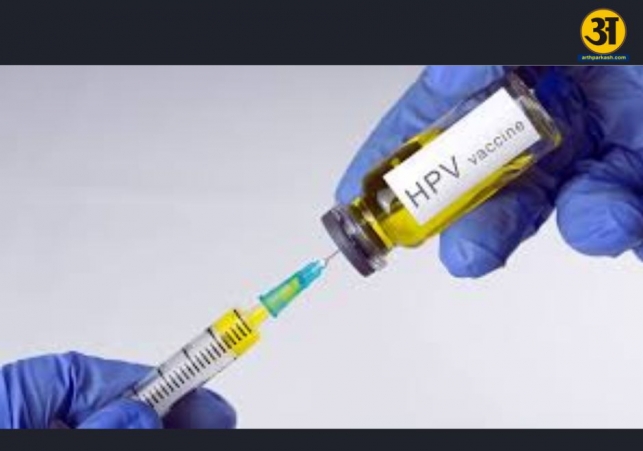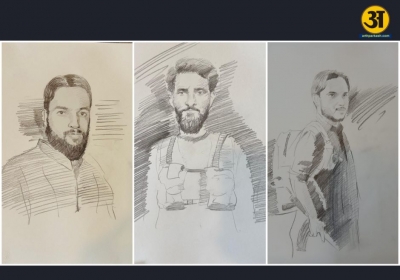
Low response to HPV vaccine at PGIMER for cervical cancer prevention
Few come forward for HPV vaccine at Chandigarh’s PGIMER despite cervical cancer risk
India launched its first home-made vaccine to prevent cervical cancer in 2023. The vaccine is called Cervavac. It was made by the Serum Institute of India (SII). They worked with the central government’s Department of Biotechnology (DBT), the Biotechnology Industry Research Assistance Council (BIRAC), and the Bill and Melinda Gates Foundation to create it.
Cervavac is given to girls and young women between the ages of 9 and 25 to protect them against the human papilloma virus (HPV), which can cause cervical cancer. But even after a year of its launch, not many girls are coming forward to get this vaccine at Chandigarh’s Post Graduate Institute of Medical Education and Research (PGIMER).
Doctors at PGIMER said only 63 girls in the 18–25 age group have taken Cervavac so far. This low number has worried health experts. Doctors from the gynaecology department and the Advanced Paediatric Centre shared that the main reasons behind the poor response are lack of awareness, the cost of the vaccine, and the fact that it is not part of India’s free national immunisation programme.
Why the uptake is low
Cervavac costs between ₹1,500 and ₹2,000 per dose. Since it is not part of the national immunisation scheme, people have to pay for it themselves. Many people do not know about this vaccine or its benefits, and some find the price too high.
In comparison, foreign-made HPV vaccines cost between ₹4,000 and ₹9,000. So, Cervavac is still cheaper, but it’s still costly for many families, especially those with lower incomes.
Doctors say that the vaccine is most effective if taken before a girl becomes sexually active. That is why the ideal age for vaccination is before 15. This way, the body can build protection against HPV before it is ever exposed to the virus. Dr Rashmi Bagga from the obstetrics and gynaecology department said, “If someone has already come into contact with HPV, then the vaccine won’t be effective. So, it’s best to take it early.”
The vaccine works by helping the body fight off certain types of HPV strains. These strains are linked to various cancers, especially cervical cancer. The vaccine has shown good results in tests. Dr Bagga shared that a study of 2,341 people showed positive effects of Cervavac, and there were no side effects reported so far. The vaccine’s results were found to be just as good as other international vaccines.
About HPV and how it spreads
HPV spreads mainly through skin-to-skin contact during sexual activity. In some cases, it can also pass from mother to baby during childbirth. The body’s immune system can usually fight off the infection, but sometimes, the virus stays in the body and causes cells to become cancerous.
HPV is known to cause cervical, vulvar, vaginal, and anal cancers in women. In men, it can lead to anal and penile cancers. It can also cause genital warts in both men and women.
Dr Sanjay Verma from the Advance Paediatric Centre at PGIMER said that less than 1% of teenage girls who come to the hospital’s outpatient department (OPD) take the HPV vaccine. He has expertise in paediatric infectious diseases and vaccinations. According to him, most people do not understand the risks of HPV. “The virus can be silent, but dangerous. It can stay in the body for years and later cause cancer,” he said.
The Indian Academy of Paediatrics recommends the use of the HPV vaccine, and the World Health Organization (WHO) has also pre-approved five HPV vaccines, including Cervavac. Yet, the vaccine is not reaching enough people.
Cervical cancer in India
Cervical cancer is a serious health issue in India. According to the ICMR-National Institute of Cancer Prevention and Research, one woman in India dies of cervical cancer every eight minutes. It is the second most common cancer in Indian women, after breast cancer.
The risk of this cancer can be greatly reduced with the HPV vaccine. But due to poor awareness and limited access, many girls are missing out. Experts say it is important to spread the word about the benefits of Cervavac and make it more affordable.
Dr Verma believes that if the vaccine is added to the national immunisation programme, more girls will be able to get it for free. This would help prevent thousands of cancer cases in the future.
To increase the number of people taking the HPV vaccine, doctors suggest the following steps:
-
Raise awareness: People need to know more about HPV and how the vaccine can protect against cancer.
-
Lower the cost: Making the vaccine cheaper or free will help reach more people, especially from poor families.
-
Include in government programmes: If Cervavac becomes part of the national immunisation plan, it will be easier for hospitals and clinics to provide it to young girls.
-
Encourage early vaccination: Parents should be encouraged to get their daughters vaccinated before the age of 15.
Health experts are hopeful that with better communication and government support, more people will take this life-saving vaccine.
India has made a big step by developing its own HPV vaccine. But its success depends on how many people actually use it. At present, the numbers are low, but with better planning and education, Cervavac can help prevent thousands of cervical cancer cases. PGIMER’s experience shows that much work needs to be done to increase vaccine coverage.
Doctors continue to encourage parents and young girls to come forward and take the vaccine at the right age. The fight against cervical cancer can be won—but only if the tools like Cervavac reach every home.





